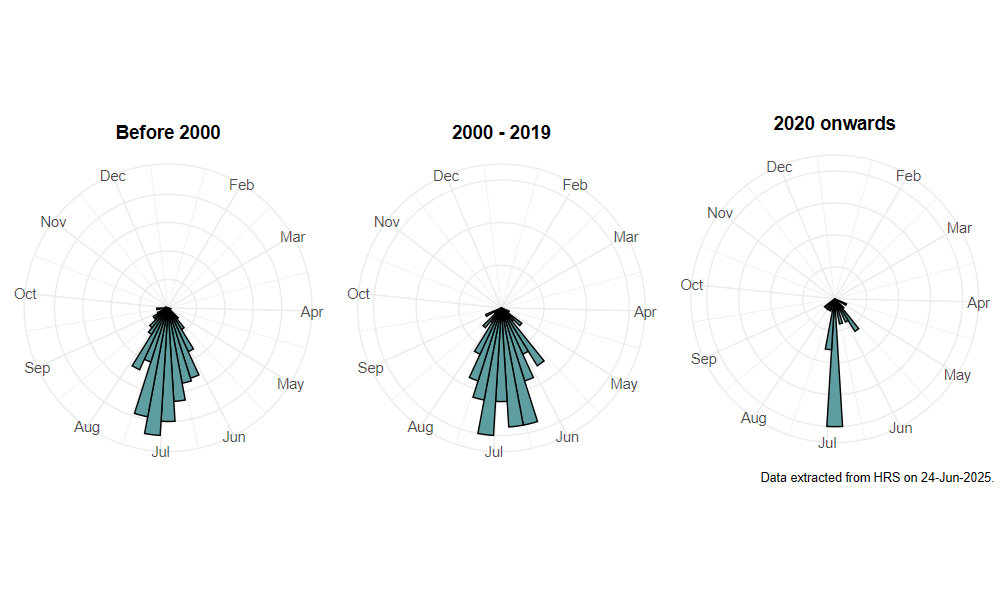Xylota florum (Fabricius, 1805)
Identification
Identification difficulty = 3. ![]()
![]() according to Ball & Morris, 20241
according to Ball & Morris, 20241
Biology
The larva is associated with decaying wood and sap. An association with Black Poplar Populus nigra has been claimed, based on rearing records, but this dates from before it was separated from X. coeruleiventris and X. meigeniana so the identity of these records must be in some doubt. Adults are usually found in damp places in woodland such as stream-sides, where they can be seen sunning on logs, including those partially submerged in water. There would appear to be a strong concentration of records on the acid heaths of south-east England.
Flight period
The following plots show the number of unique records per week excluding those reported to be of immature stages.

Status
Was listed as 'Notable' by Falk, 19912, but dropped from this status by Ball & Morris, 20143 who consider it LOWER RISK.
Distribution
A scarce species of southern Britain with scattered records extending northwards to Cumbria and Durham, but with most records from well-wooded areas of southern-central England and Wales.

Trends
The following plots show the Frescalo TFactor vs year and a map of the rescaled frequency (all records) for the species.
-
Ball, S., & Morris, R. (2024). Hoverflies of Britain and Ireland. WILDGuides (3rd ed.). Oxford: Princeton University Press. ↩
-
Falk, S. (1991). A review of the scarce and threatened flies of Great Britain. ( No. 39). Research and Survey in Nature Conservation (pp. 1–194). Peterborough: NCC. ↩
-
Ball, S., & Morris, R. (2014). A review of the scarce and threatened flies of Great Britain. Part 6: Syrphidae. ( No. 9). Species status (pp. 1–130). Peterborough: JNCC. ↩